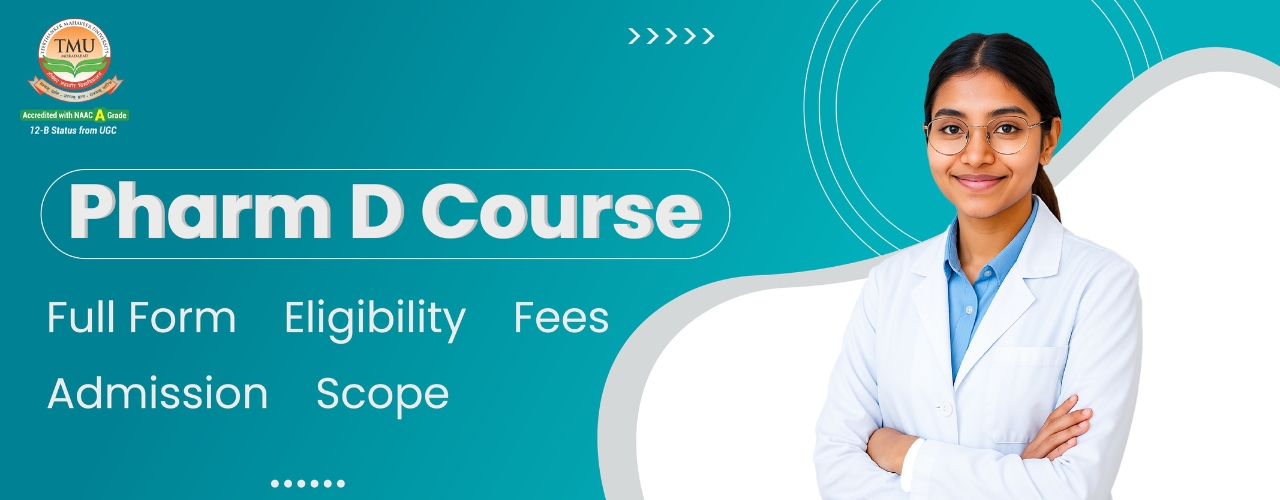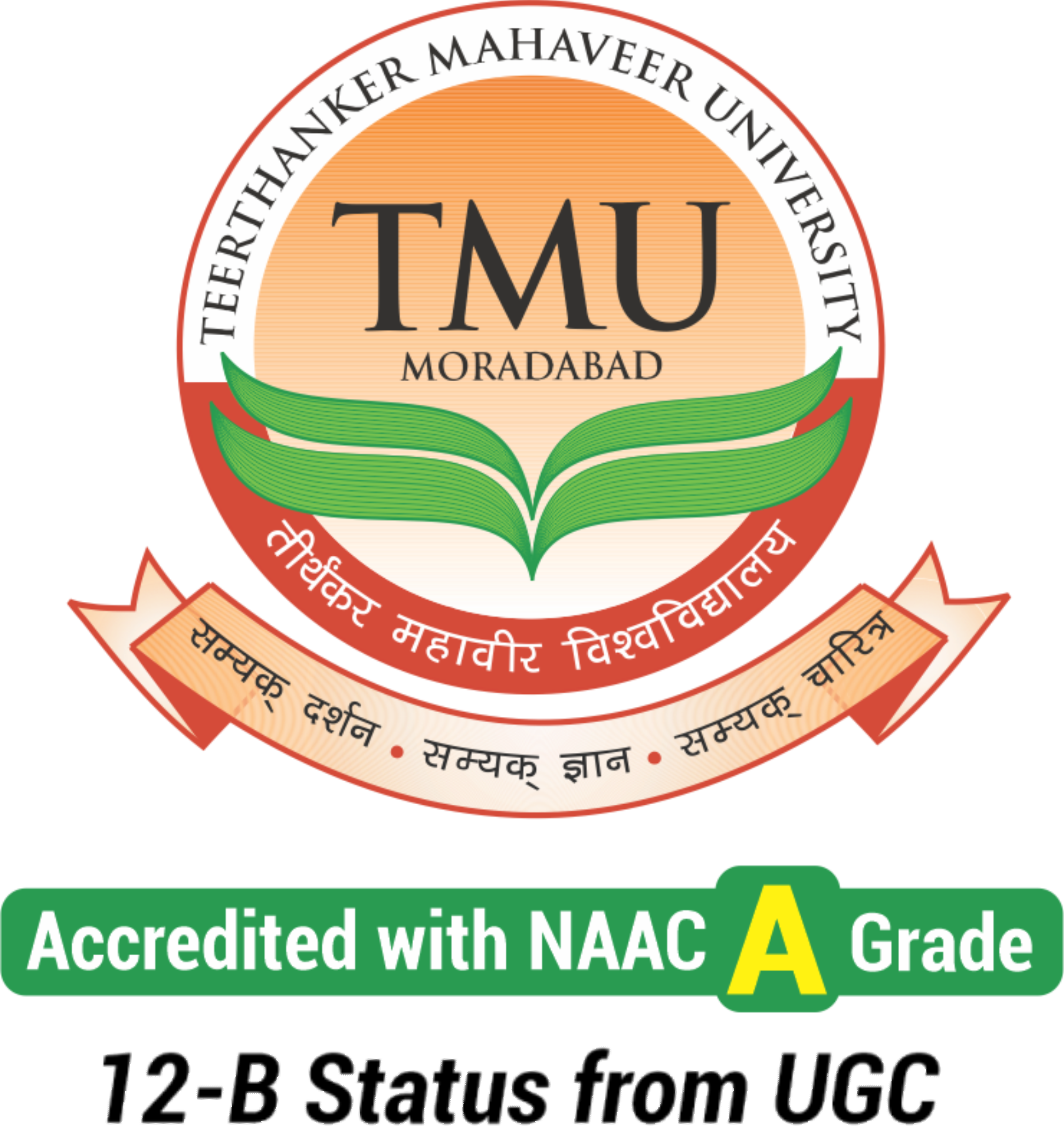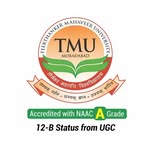Pharm D Course: Full Form, Eligibility, Fees, Admission and Scope
Table of Contents
The Doctor of Pharmacy (PharmD) is a six-year professional doctoral programme designed to prepare students for a rewarding career in the pharmaceutical and healthcare sector. Focusing on clinical practice, patient care, and medication management, this course equips graduates with the expertise to become integral members of healthcare teams.
For students interested in PharmD admission, eligibility typically requires completing 10+2 with Physics, Chemistry, and Biology, along with meeting the institution's minimum percentage requirements. The programme blends theoretical knowledge with hands-on training in hospitals, community pharmacies, and research labs, ensuring that students gain practical skills alongside academic excellence.
Pursuing a PharmD degree opens up diverse career opportunities in hospital pharmacies, clinical research, pharmaceutical industries, and patient counseling. For students passionate about improving healthcare outcomes, choosing the right Pharm D colleges in UP ensures access to quality education, practical training, and industry exposure, preparing graduates to excel in the rapidly growing field of pharmacy and healthcare services.
What is Pharm D?
Pharm D stands for Doctor of Pharmacy. It’s a professional doctoral program that prepares students for clinical roles in the healthcare system. Unlike B.Pharm, which is more industry- and production-focused, Pharm D focuses heavily on clinical practice and patient interaction. Think of it as a bridge between the doctor and the patient when it comes to medication.
Teerthanker Mahaveer University
Apply for Admission
Click Here To Apply for Admission
Pharm D Course Overview
Here’s a consolidated view of everything you need to know about Pharm D:
| Parameter | Details |
| Full Form | Doctor of Pharmacy |
| Duration | 6 years (Regular), 3 years (Post Baccalaureate) |
| Eligibility | 10+2 with PCB/PCM or B.Pharm |
| Admission Process | Entrance exam or merit-based |
| Fees (Govt) | ₹40,000 – ₹1 Lakh per year (approx) |
| Fees (Private) | ₹1.5 – ₹3.5 Lakhs per year (approx) |
| Top Colleges | JSS, Manipal, DIPSAR, SRM, TMU |
| Average Salary (India) | ₹3.5 – ₹6 LPA (Entry-level) |
| Scope Abroad | High, especially in US, Canada, Gulf |
| Career Options | Clinical Pharmacist, CRA, Medical Writer |
History and Global Recognition
Introduced in India by the Pharmacy Council of India (PCI) in 2008, Pharm D is modelled after the American style of pharmacy education, where it is considered the basic qualifying degree for becoming a licensed pharmacist.
Globally, especially in countries like the USA, Australia, and parts of Europe, a PharmD is considered a clinical doctorate, and holders are allowed to practice patient-care pharmacy.
Pharm D: Course Structure 2025
One of the unique things about Pharm D is its dual-entry pathway: the full 6-year course for freshers and a condensed 3-year version for those who have completed a B.Pharm.
Breakdown of the Programs
- Pharm D (Regular): 6 years
- 5 years of academic study
- 1 year of mandatory internship/clinical rotation in a hospital setting
- Pharm D (Post Baccalaureate): 3 years
- Designed for students who already hold a Bachelor of Pharmacy (B.Pharm) degree
- Includes 2 years of study + 1-year clinical internship
Subjects and Learning Methodology
The course includes a wide range of subjects, including:
- Pharmacology
- Clinical Pharmacy
- Hospital Pharmacy
- Biostatistics and Research Methodology
- Community Pharmacy
- Pharmacotherapeutics
- Patient Safety and Counselling
The final year is heavily focused on real-time patient care, case presentations, and working in multi-disciplinary teams in hospital settings.
Students are trained not just in theoretical knowledge but also in clinical decision-making and pharmacovigilance, making them key contributors to modern healthcare systems.
Pharm D vs B Pharmacy: Key Differences
Let's be clear—many students mistake Pharm D for B Pharmacy. While they sound similar and both relate to pharmacy, they’re very different in purpose, depth, and career scope.
| Feature | Pharm D (Doctor of Pharmacy) | B Pharmacy (Bachelor of Pharmacy) |
| Full Form | Doctor of Pharmacy | Bachelor of Pharmacy |
| Course Duration | 6 years (5 years academic + 1 year internship) | 4 years |
| Eligibility | 10+2 with PCB/PCM or D.Pharm | 10+2 with PCB/PCM |
| Level of Study | Doctoral level professional degree | Undergraduate degree |
| Focus Area | Clinical pharmacy, patient care, drug therapy | Pharmaceutical sciences, manufacturing, QC |
| Industry Exposure | High - includes 1-year hospital internship | Moderate - mainly through industrial training |
| Curriculum | More clinical and patient-oriented | More theoretical and industry-focused |
| Internship | Mandatory 1-year clinical internship | 1–2 months industry internship (optional) |
| Career Roles | Clinical Pharmacist, Drug Safety Officer, CRA | Pharmacist, Production Chemist, QA Analyst |
| Higher Education Options | PhD, Postdoctoral, MPH, MBA in Healthcare | M.Pharm, MBA, Clinical Research, Regulatory Affairs |
| Practice Settings | Hospitals, clinics, international healthcare roles | Pharmaceutical companies, research labs, hospitals |
| Global Recognition | High – required in countries like USA, Canada | Moderate – additional qualification may be needed |
| Average Starting Salary (INR) | ₹3.5 to ₹6 LPA | ₹2.5 to ₹4.5 LPA |
| Prescribing Authority | Advisory role only (can’t prescribe in India) | No prescribing authority |
| Licensing Requirement | PCI registration + state-specific requirements | PCI registration |
| Best For | Those interested in patient care, clinical practice | Those inclined toward pharma industry & research |
Pharm D: Eligibility Criteria 2025
Before you start dreaming of becoming a clinical pharmacist, you need to meet some basic requirements. Don’t worry—they’re pretty straightforward.
Educational Qualifications
To enrol in the 6-year Pharm D program:
- You must have passed 10+2 or equivalent with Physics, Chemistry, and Biology/Mathematics as compulsory subjects.
- Or, you must have completed a Diploma in Pharmacy from a recognized board.
To enrol in the 3-year Pharm D (Post Baccalaureate):
- You must hold a Bachelor of Pharmacy (B.Pharm.) from a PCI-recognised institution.
Age and Minimum Marks
- Minimum age: 17 years
- Minimum marks: Usually 50% aggregate in PCB/PCM, though the threshold may vary slightly by college.
Lateral Entry
Lateral entry is allowed only in the 3-year Pharm D post-baccalaureate program and not in the regular 6-year track.
Pharm D: Admission Process 2025
Getting into a Pharm D program in India involves a mix of entrance exams, merit-based shortlisting, and personal interviews (in some colleges). It’s not as cutthroat as MBBS, but competition is steadily increasing.
Entrance Exams
Most colleges admit students based on state-level or university-specific entrance exams. Some of the common ones include:
- NEET (occasionally accepted)
- EAMCET (Andhra Pradesh and Telangana)
- KEAM (Kerala)
- BITSAT
- PUCET (Panjab University)
- JSSU Entrance Test
However, several private colleges also offer direct admission based on Class 12 scores.
Merit-Based Selection
In many government and private colleges, admission is offered on a first-come, first-served basis or via merit lists prepared based on Class 12 board marks. Those with a strong science background and good marks in Physics, Chemistry, and Biology/Mathematics generally have a better chance.
Documents Required
Here’s what you’ll typically need during the Pharm D admission process:
- Class 10 and 12 mark sheets
- Transfer certificate (TC)
- Migration certificate (if required)
- Entrance exam scorecard (if applicable)
- Passport-size photographs
- Identity proof (Aadhaar, PAN, etc.)
- Caste certificate (if applicable)
- Domicile certificate (for state quota seats)
Pharm D Fees Structure in India
The cost of doing a Pharm D in India can vary wildly depending on whether you're enrolling in a government college or a private institute.
Government Colleges
- Fee Range: ₹40,000 to ₹1,00,000 per year
- Total Duration: 6 years
- Government institutions usually subsidize costs significantly, making them more affordable for most students.
Private Institutions
- Fee Range: ₹1.5 lakhs to ₹3.5 lakhs per year
- Additional Costs:
- Hostel and accommodation: ₹50,000 – ₹1,00,000/year
- Books and lab materials: ₹10,000 – ₹25,000/year
- Internship expenses and travel (in final year)
Keep in mind, some premium private colleges may charge a total of ₹15–18 lakhs for the full course duration.
Career Opportunities After PharmD
The scope of Pharmd is not just limited to dispensing medications. Graduates are trained to be pharmaceutical care providers, working alongside doctors and healthcare teams.
Hospital and Clinical Pharmacy
Pharm D grads are often employed as:
- Clinical Pharmacists
- Pharmacovigilance Officers
- Therapeutic Drug Monitoring Specialists
- Patient Counselors
- Medication Safety Officers
They work directly with doctors in hospitals to ensure correct dosages, flag drug interactions, and counsel patients.
Pharmaceutical Industry
Pharm D holders can work in:
- Regulatory Affairs
- Medical Writing
- Quality Assurance
- Clinical Trials and Research
- Pharmacovigilance
Multinational pharmaceutical companies often look for Pharm D grads for roles that demand deep understanding of drug development and usage.
Research and Academia
Want to stay in the academic or research world? You can become:
- Lecturer in Pharmacy Colleges
- Clinical Research Associate (CRA)
- Pharma Research Analyst
- Or pursue a PhD and move into drug innovation and toxicology studies
The world of pharmacy is expanding fast, and Pharm D professionals are at the centre of that growth.
Scope of Pharm D in India and Abroad
While India is still catching up in terms of recognising clinical pharmacists, the global market is already a few steps ahead.
Demand in the Healthcare Sector
As India adopts Western models of healthcare, demand for clinical pharmacists is increasing, especially in multispecialty hospitals, ICUs, and tertiary care setups. The role of a pharmacist is no longer behind the counter—it's at the heart of patient recovery.
Opportunities Abroad
In countries like the USA, Canada, Australia, and the Middle East, Pharm D is considered the entry-level qualification for clinical practice. With proper licensure (e.g., NAPLEX for the USA), Pharm D grads from India can pursue high-paying roles globally.
Higher Education Options
After Pharm D, you can also go for:
- PhD in Pharmacy or Clinical Sciences
- Postdoctoral Fellowships
- MBA in Healthcare Management
- MPH (Master of Public Health)
All these options provide opportunities for increased salaries, leadership positions, and global exposure.
Average Salary After Pharm D
So, how much can you earn after completing a Pharm D? Well, salary after Pharm D depends on several factors—location, job role, experience, and the type of organization you join.
Entry-Level Salary
- India: ₹3.5 to ₹5.5 LPA (Lakhs Per Annum)
- Roles: Clinical Pharmacist, Drug Safety Associate, Hospital Pharmacist
- Freshers working in private hospitals or small clinics may start at the lower end
- Government jobs like Assistant Drug Inspector can offer slightly higher packages
Mid-Level and Senior Salary
- After 3–5 years of experience, salaries increase significantly:
- ₹6 to ₹12 LPA for roles like Pharmacovigilance Specialist, Regulatory Officer
- ₹10 to ₹20 LPA in corporate pharma or multinational research organizations
If you transition into management, consulting, or entrepreneurship, the earning potential can skyrocket beyond ₹25 LPA.
International Salary Comparison
- USA: $90,000 to $120,000/year (₹75 LPA to ₹1 Cr)
- Canada: CAD 80,000 to CAD 100,000/year
- Gulf countries: AED 100,000 to AED 150,000/year (₹22–33 LPA)
But keep in mind, working abroad typically requires clearing exams like NAPLEX, PEBC, or MOH/DHA, depending on the country.
Advantages of Choosing Pharm D
If you’re wondering why you should choose Pharm D over other health-related courses, here are some powerful reasons that make it a smart choice.
Long-Term Career Benefits
Pharm D graduates are trained at the doctoral level. Over time, this qualification opens doors for:
- Leadership roles in healthcare settings
- Positions in international health organisations
- Access to high-paying jobs with pharma giants
Recognition in Healthcare
Unlike traditional pharmacy roles, Pharm D gives you the chance to:
- Participate directly in patient care
- Guide doctors on drug usage and side effects
- Improve patient outcomes through medication management
Patient-Centric Role
You don't work in the background. You’re involved in real-time healthcare delivery, often interacting with patients to educate and guide them.
It’s one of the few non-MBBS degrees that allow you to play a clinical role in hospitals.
Challenges Faced in Pharm D
Every course has its struggles, and Pharm D is no exception. Before diving in, it’s good to know what you might face.
Academic Rigor
Pharm D is not a cakewalk. It’s a demanding 6-year program that includes:
- Long hours of study
- Extensive clinical internships
- Frequent presentations and practical exams
Students must manage stress and time effectively to succeed.
Industry Awareness
Despite being launched in 2008, many employers in India still prioritize B.Pharm or M.Pharm for traditional roles. Pharm D is recognized, but not all institutions offer structured placement support.
Placement Gaps in Tier-2 Cities
In smaller towns and cities, job opportunities may be limited. While the course offers rich knowledge, the availability of clinical roles is still evolving outside metro cities.
That’s why it’s crucial to choose a reputed institution that offers industry exposure and strong placement support.
Top Colleges for Pharm D:
- Jamia Hamdard, New Delhi
- National Institute of Pharmaceutical Education and Research (NIPER), Hyderabad
- Birla Institute of Technology and Science (BITS), Pilani
- JSS College of Pharmacy, Ooty
- Institute of Chemical Technology (ICT), Mumbai
- JSS College of Pharmacy, Mysore
- Manipal College of Pharmaceutical Sciences, Manipal
- Teerthanker Mahaveer University, Moradabad, TMU
Which college is best for Pharm D?
Teerthanker Mahaveer University (TMU) offers a comprehensive Pharm D programme with several advantages:
- Cutting-Edge Curriculum: TMU's Pharm D programme is designed to keep you at the forefront of pharmacy practice, exposing you to the latest advancements in pharmaceutical sciences.
- Affordable Tuition Fees: TMU provides its MBA programs at a competitive fee structure, making quality education accessible to a broader range of students.
- Clinical Experience: Practical exposure is an integral part of the programme, ensuring you gain hands-on experience.
- Experienced Faculty: Learn from knowledgeable professionals and educators.
- NAAC 'A' Accredited University: TMU is recognised as an NAAC 'A' accredited university, ensuring quality education.
- Placement Assistance: TMU claims to offer 100% placement assistance.
- Infrastructure: TMU has well-equipped labs and a drug information centre to support your studies.
For more information, visit the official website of TMU.
Pharm D Fees at TMU
Here is the detailed fee structure for the Doctor of Pharmacy (Pharm.D) programme at Teerthanker Mahaveer University (TMU), Moradabad:
Pharm.D (6-Year Programme) Fee Structure
| Particulars | Amount (INR) |
| Tuition Fee (Per Semester) | ₹90,000 |
| Total Tuition Fee (12 Semesters) | ₹10,80,000 |
| University Examination Fee (Per Year) | ₹11,000 × 6=₹66,000 |
| Lab Charges (Per Semester) | ₹500 × 12=₹6,000 |
| Enrolment Fee (One-Time) | ₹1,000 |
| Admission Registration Fee (One-Time) | ₹5,000 |
| Admission Processing Fee (One-Time) | ₹2,500 |
| Convocation Charges (Final Year) | ₹2,500 |
| Alumni Charges (One-Time) | ₹500 |
| Total Estimated Fee | ₹11,63,500 |
Pharm.D (Post Baccalaureate) – 3-Year Programme
| Particulars | Amount (INR) |
| Tuition Fee (Per Semester) | ₹75,600 |
| Total Tuition Fee (6 Semesters) | ₹4,53,600 |
| University Examination Fee (Per Year) | ₹11,000 × 3=₹33,000 |
| Lab Charges (Per Year) | ₹1,000 × 3=₹3,000 |
| Enrolment Fee (One-Time) | ₹1,000 |
| Admission Registration Fee (One-Time) | ₹5,000 |
| Admission Processing Fee (One-Time) | ₹2,500 |
| Convocation Charges (Final Year) | ₹2,500 |
| Alumni Charges (One-Time) | ₹500 |
| Total Estimated Fee | ₹5,00,100 |
Conclusion
Pharm D is more than just a degree—it’s a gateway to a fulfilling, patient-focused career in healthcare. It gives you the depth of a doctoral program and the practical edge required in modern medical settings.
While it may not be as widely understood as MBBS or B.Pharm just yet, it’s quickly gaining ground. If you’re passionate about healthcare, medicine, and making a difference in people’s lives, Pharm D could be your calling.
Just make sure you pick the right college, stay committed through the intense academic journey, and take full advantage of the hands-on experience this program provides.
In the long run, the Pharm D path can lead you to a globally respected profession with solid financial and personal rewards.
FAQs
Q1. Is Pharm D equal to MBBS?
Ans: No, PharmD is not equivalent to MBBS. MBBS graduates are medical doctors, while PharmD professionals are clinical pharmacists who assist with drug therapy and patient safety.
Q2. Can a PharmD graduate prescribe medicine?
Ans: In India, PharmD professionals cannot prescribe medication independently. However, they can advise physicians on drug interactions and proper dosages.
Q3. What is the salary of a Pharmd D in India?
Ans: Entry-level salaries range from ₹3.5 to ₹6 LPA, with potential to earn ₹12+ LPA in corporate roles or with international placements..
Q4. Which is better: Pharm D or B Pharmacy?
Ans: If you're interested in clinical practice and patient care, go for Pharm D. If you prefer industry roles and drug manufacturing, B Pharm is better..
Q5. Is NEET required for Pharm D?
Ans: No, NEET is not mandatory for Pharm D admissions in most colleges. However, some institutes may consider NEET scores as part of their criteria..















